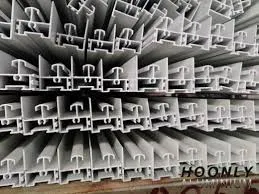iron casting patterns
The Importance of Patterns in Iron Casting
Iron casting is a highly regarded method of producing complex metal shapes, widely used in various industries ranging from automotive to construction. A crucial element in this process is the use of patterns, which are templates that facilitate the creation of molds for casting. Understanding the significance of patterns in iron casting helps to appreciate the intricacies involved in producing high-quality cast components.
What are Casting Patterns?
A casting pattern is a replica of the object to be produced through the casting process. It is typically made from materials such as wood, metal, or plastic and is used to shape the sand or other materials that form the mold cavity. The pattern must accurately represent the dimensions and features of the final product, taking into account various factors, such as shrinkage and allowances for finishing processes.
Types of Patterns
There are several types of patterns utilized in iron casting, each serving distinct purposes
1. Solid Patterns These are the simplest forms and consist of a single piece that creates the entire mold cavity. They are used for uncomplicated designs where no complex engineering features are involved.
2. Split Patterns These patterns are divided into two or more pieces, allowing for the easy removal of the pattern from the mold. They are useful for complex shapes requiring undercuts or intricate details.
3. Match Plates These consist of two halves of a mold pattern that are mounted on a plate. This system facilitates the quick production of multiple castings and allows for high efficiency.
4. Core Patterns Used to create internal cavities in the casting, core patterns create cores to form hollow sections in the final casting. This is vital for items like engine blocks or pipes.
5. Temporary Patterns These patterns are made from less durable materials, such as foam or plaster, and are used for limited production runs or prototypes. They offer more design flexibility but may not withstand repeated use.
iron casting patterns

The Pattern Making Process
Creating a pattern involves several critical steps. First, the designer must understand the specifications of the final product, including its dimensions and surface finish requirements. Next, the pattern is crafted using the chosen material, with attention to detail to ensure accuracy.
After the initial creation, the pattern may undergo finishing processes, such as sanding or painting, to achieve the desired surface smoothness. Pattern tolerances are essential, as even a minor discrepancy can result in casting defects, which could compromise the integrity of the final product.
Challenges and Solutions in Pattern Design
Designing patterns for iron casting presents several challenges. One inherent challenge is accounting for the shrinkage of iron as it cools from its molten state. Typically, a pattern must be larger than the final piece to accommodate this shrinkage. The designer must also consider the gating and riser system, essential for ensuring that the molten iron flows properly and that air pockets do not form.
Moreover, patterns must be durable enough to withstand the rigors of mold-making while remaining cost-effective. Innovative technologies such as computer-aided design (CAD) and additive manufacturing (3D printing) are increasingly used in pattern creation, providing precise control over the design and improving efficiency in the production process.
The Role of Patterns in Quality Control
The use of patterns is essential in maintaining quality control within iron casting operations. A well-designed pattern reduces the likelihood of defects such as misalignment, inaccurate dimensions, or surface imperfections. This, in turn, enhances the overall quality and reliability of the cast components, which is vital for industries where safety and performance are critical.
Conclusion
In conclusion, patterns play an integral role in the iron casting process. They ensure the accuracy, efficiency, and quality of the final product. As technology continues to evolve, the methods for creating and utilizing patterns will improve, leading to more precise and efficient casting practices. Understanding the intricacies of pattern design and production is essential for anyone involved in the foundry industry, emphasizing the importance of this often-overlooked aspect of metalworking.
-
Window Lock Handle for Security UpgradesNewsJun.20,2025
-
Proper Lubrication Techniques for Sliding Gate WheelsNewsJun.20,2025
-
Ornamental Iron Castings for Interior DesignNewsJun.20,2025
-
Creative Ways to Decorate Around a Cast Iron FireplaceNewsJun.20,2025
-
Cast Iron Pipe and Fitting for Plumbing SystemsNewsJun.20,2025
-
Cast Iron Panel Casting for Architectural ElementsNewsJun.20,2025















